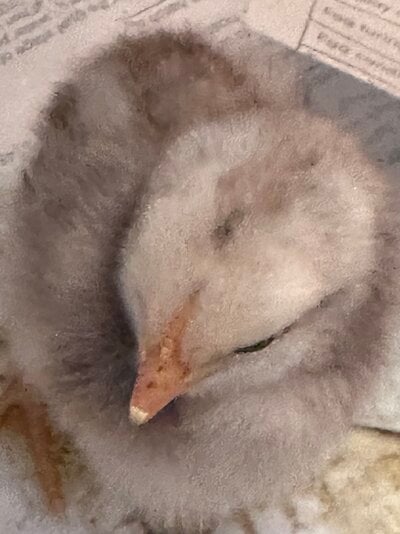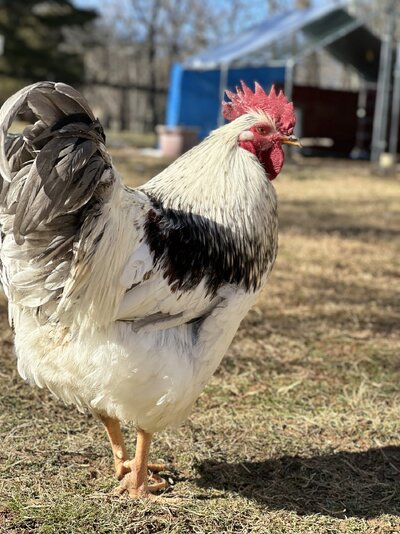So my chick with the darker markings on the head seems like it has a be a pullet. The more muddled chick does not have any obvious white spot, but does have some patches of silvery type down on the head (not quite where the head spots should be). So I'm thinking female for this one, too, as @MysteryChicken already suggested. But I'm feeling a little less confident with this one.
Anyone else have have opinions about how accurate this headspot is - particularly on lighter downed chicks? I've read that some of it has to do with breeding and genetics and birds that are bred to be more obvious to sex as chicks- whereas birds bred for other reasons (like mine) may be harder to determine/less accurate due to smaller/camoflaugued headspots (sort of Like @pipdzipdnreadytogo mentioned). My Bieles are hatchery quality (Hoovers) and my roosters are random homebred mixes. One roo is black and one is (I think) splash.
I also have a semi of off-topic question and I have no idea if anyone knows the answer- do the big hatcheries still vent-sex their auto sexing chicks? In particular the breeds that are a little less obvious like the Bieles or the legbars?
Autosexing breeds like Bieles and Legbars can get a bit tricky to determine the sex of at hatch if the autosexing trait isn't well selected for, but it's mainly in that you get more chicks that kind of fall in a gray area of could go either way. You select for better autosexing traits by just not keeping the ones that are more ambiguous and only breeding the ones that are obviously male or female.
Mixes that are sexlinked crosses, those sexlinked genes will always be inherited a specific way, it just doesn't work, or not as well, when you add certain genes that cause chick down colorations that make it hard to tell whether the gene was inherited or not. As an example, if you have a non-barred dominant white rooster that you cross to a barred hen, the male offspring will inherit barring and the female offspring will not, but male or female they will also inherit dominant white, which makes the chick down entirely or almost entirely yellowish or white, so the head spot is simply not visible. That, of course, is an extreme example, but pretty much any chick down coloration that is not black on the head can result in the barring head spot either being faint or simply not visible at all.
There is no improvement of sexing quality for the next generation in such crosses because they are just that, one-time crosses. You can't select for better sexing because crossing the resulting offspring of the original cross will not make more sexlinks anyway. In order to produce sexlinked crosses that are reliably sexable at hatch by these traits, you have to use birds whose genes will not result in chick down colorations that obscure the trait at hatch. I hope that makes sense!
As far as whether the hatcheries vent sex their autosexing breeds, I have no clue, but that is an interesting question









